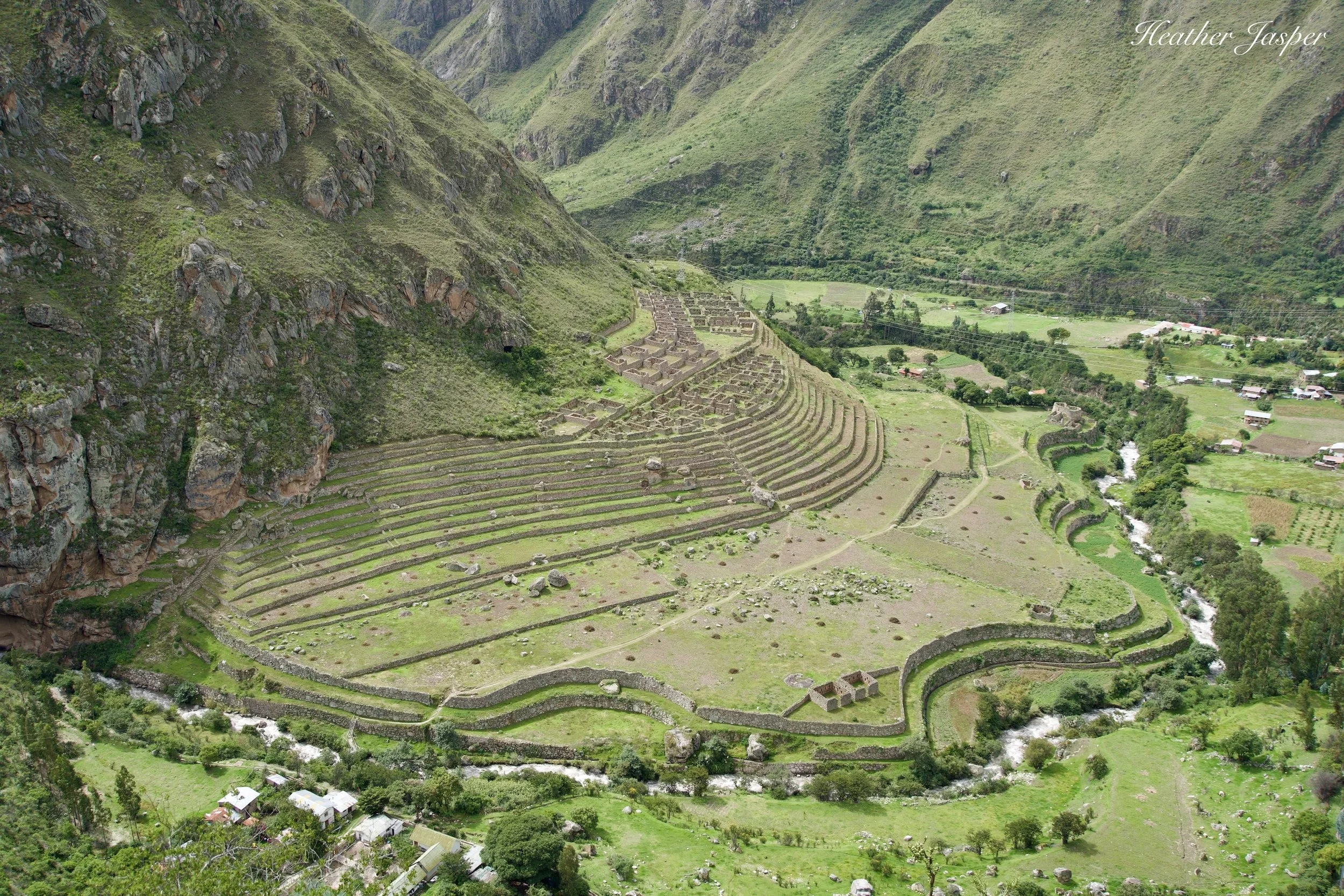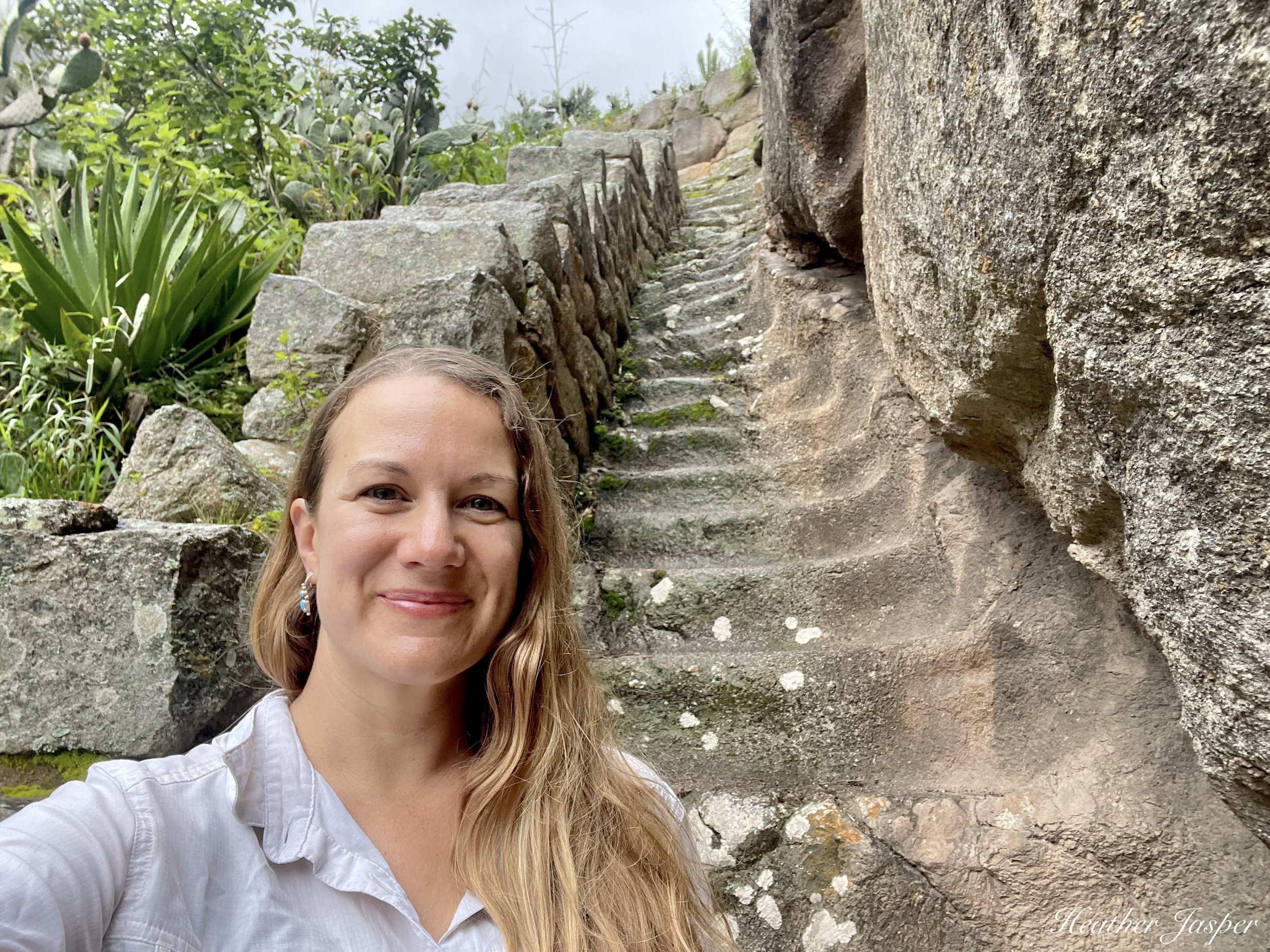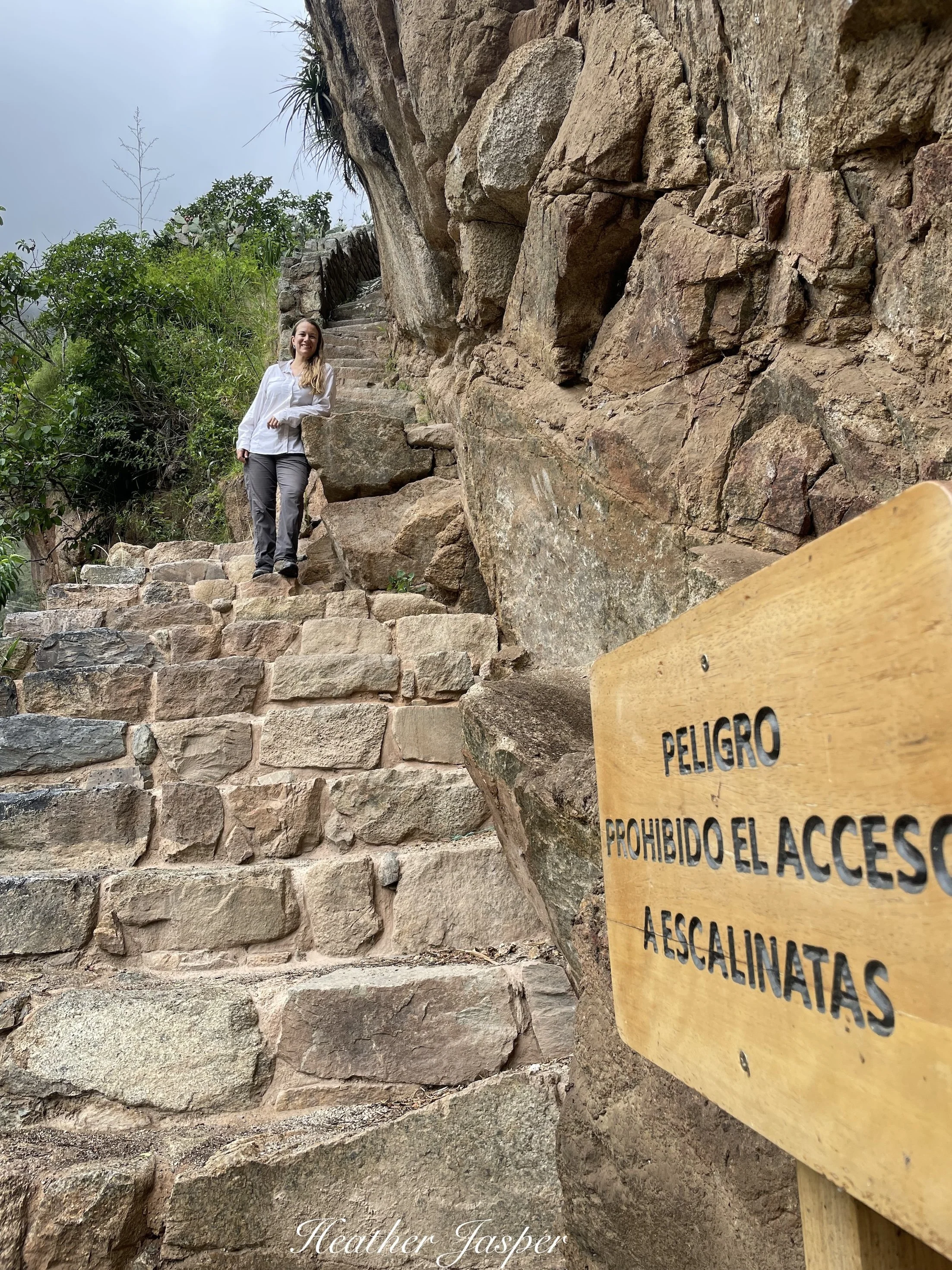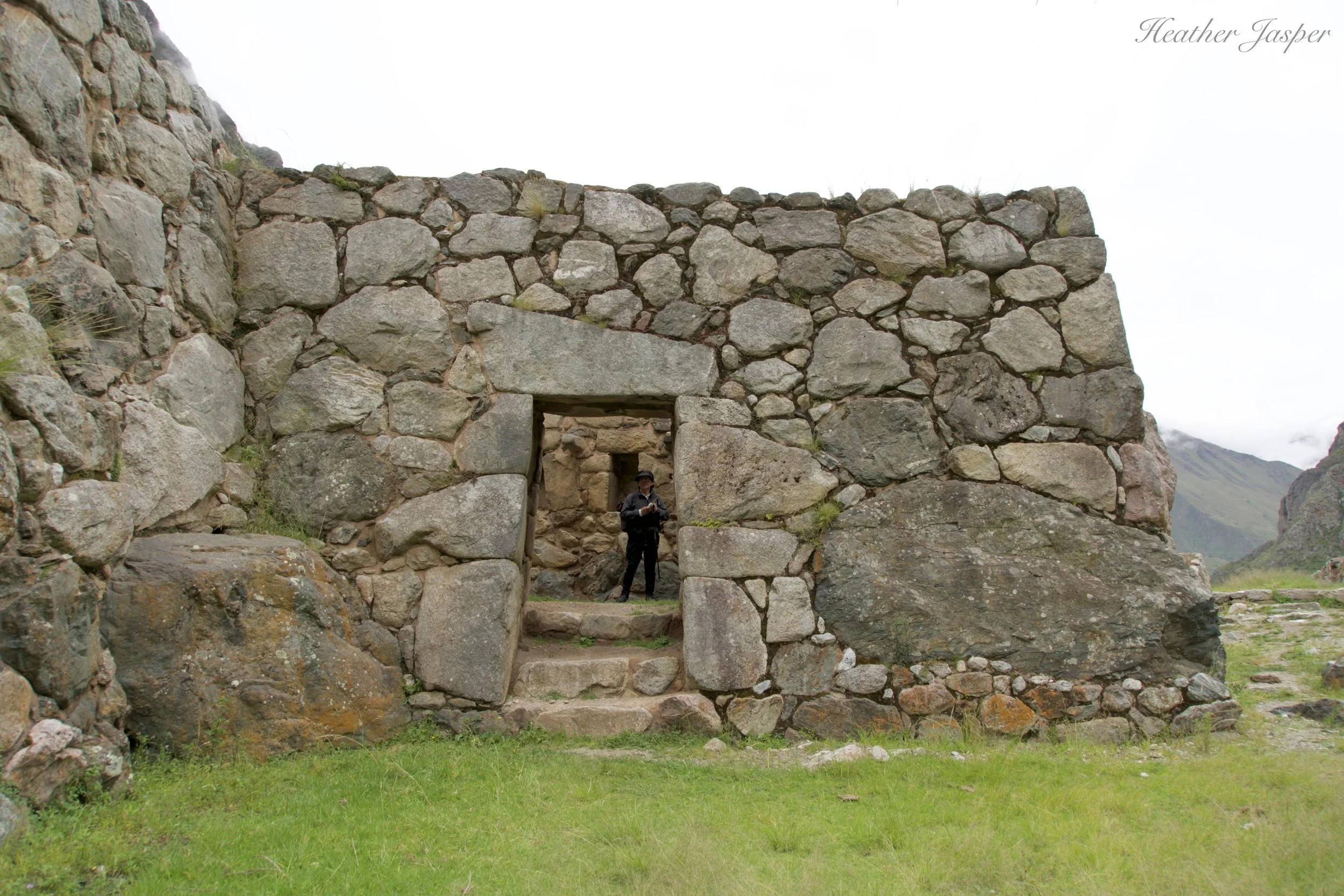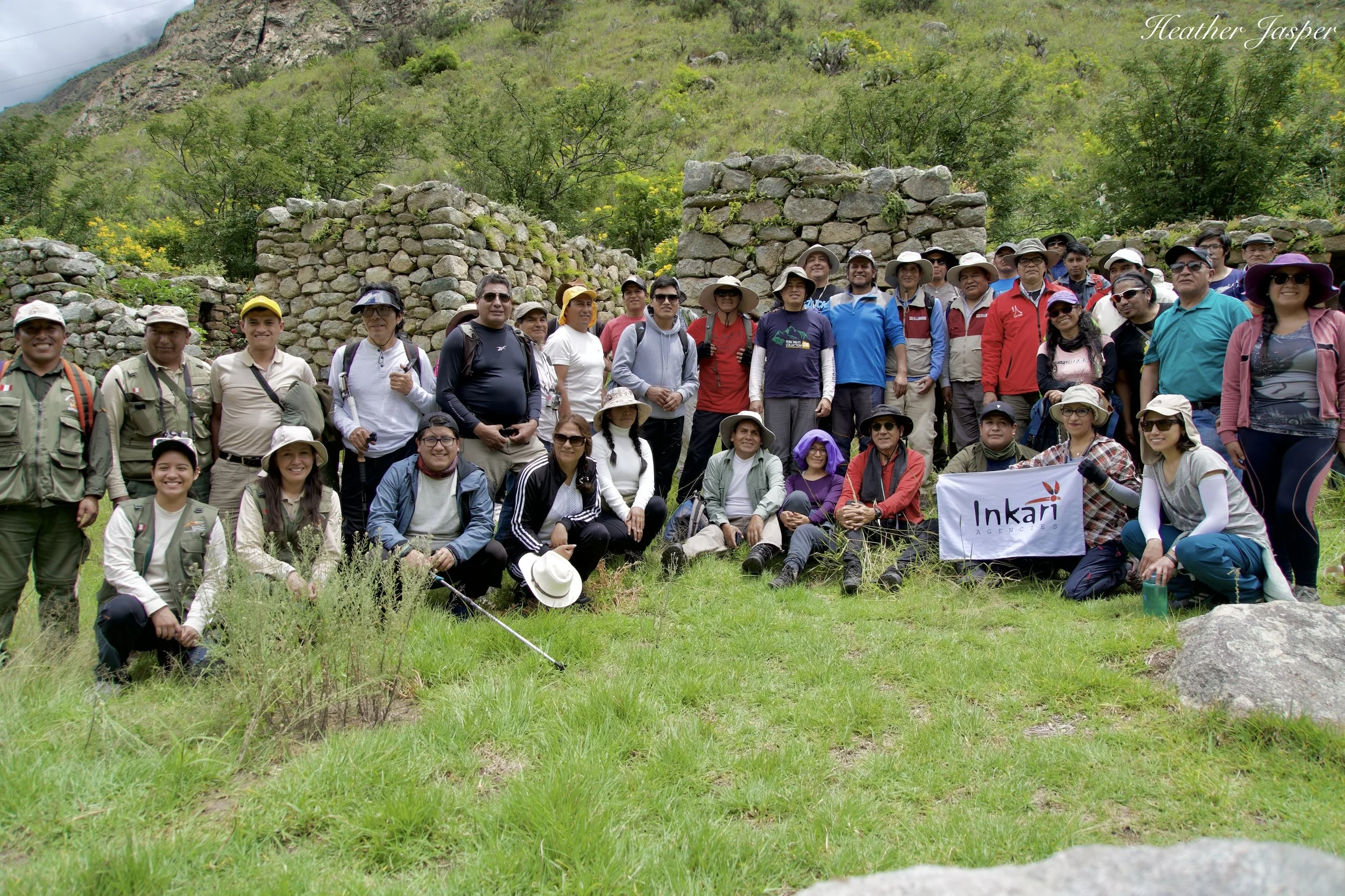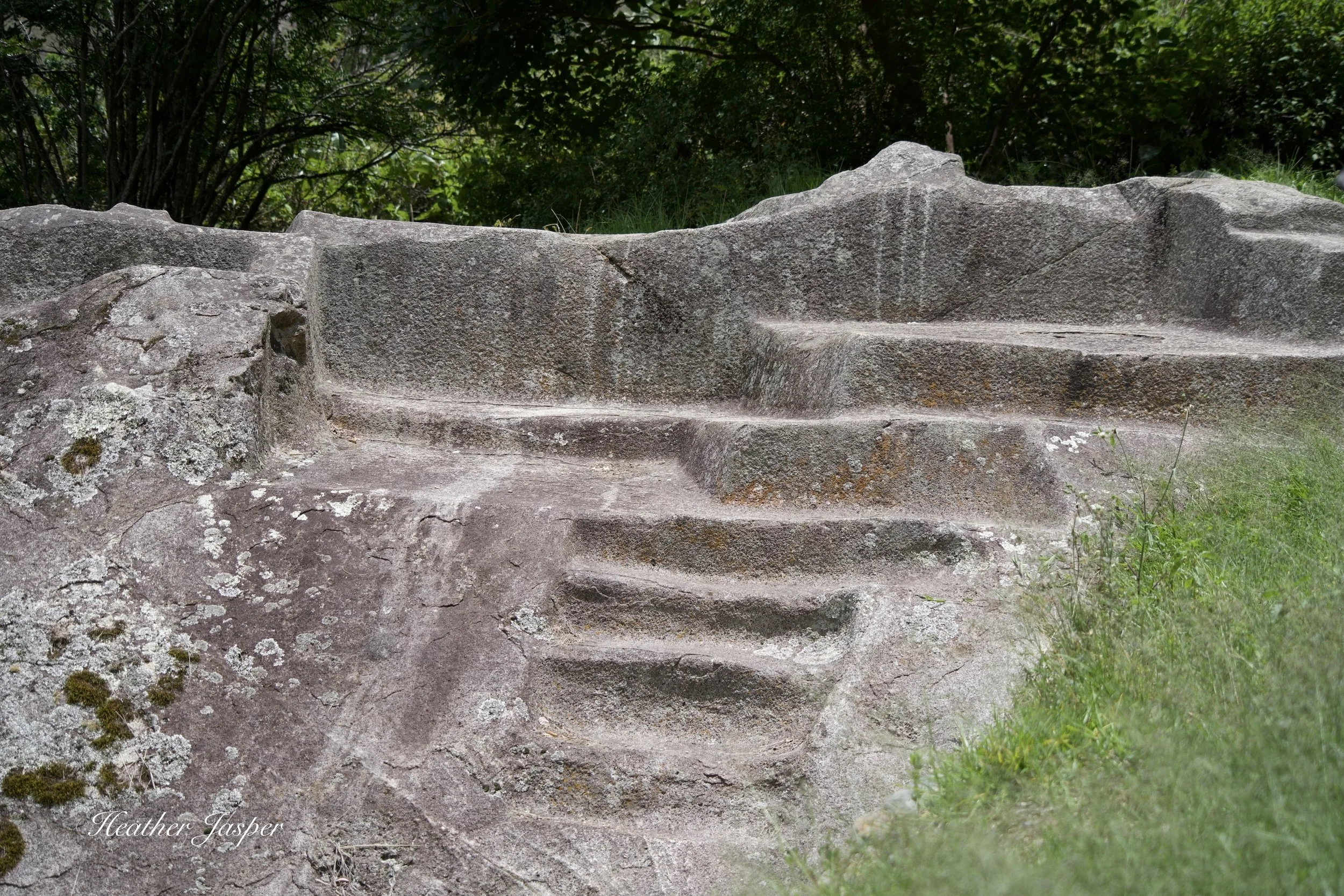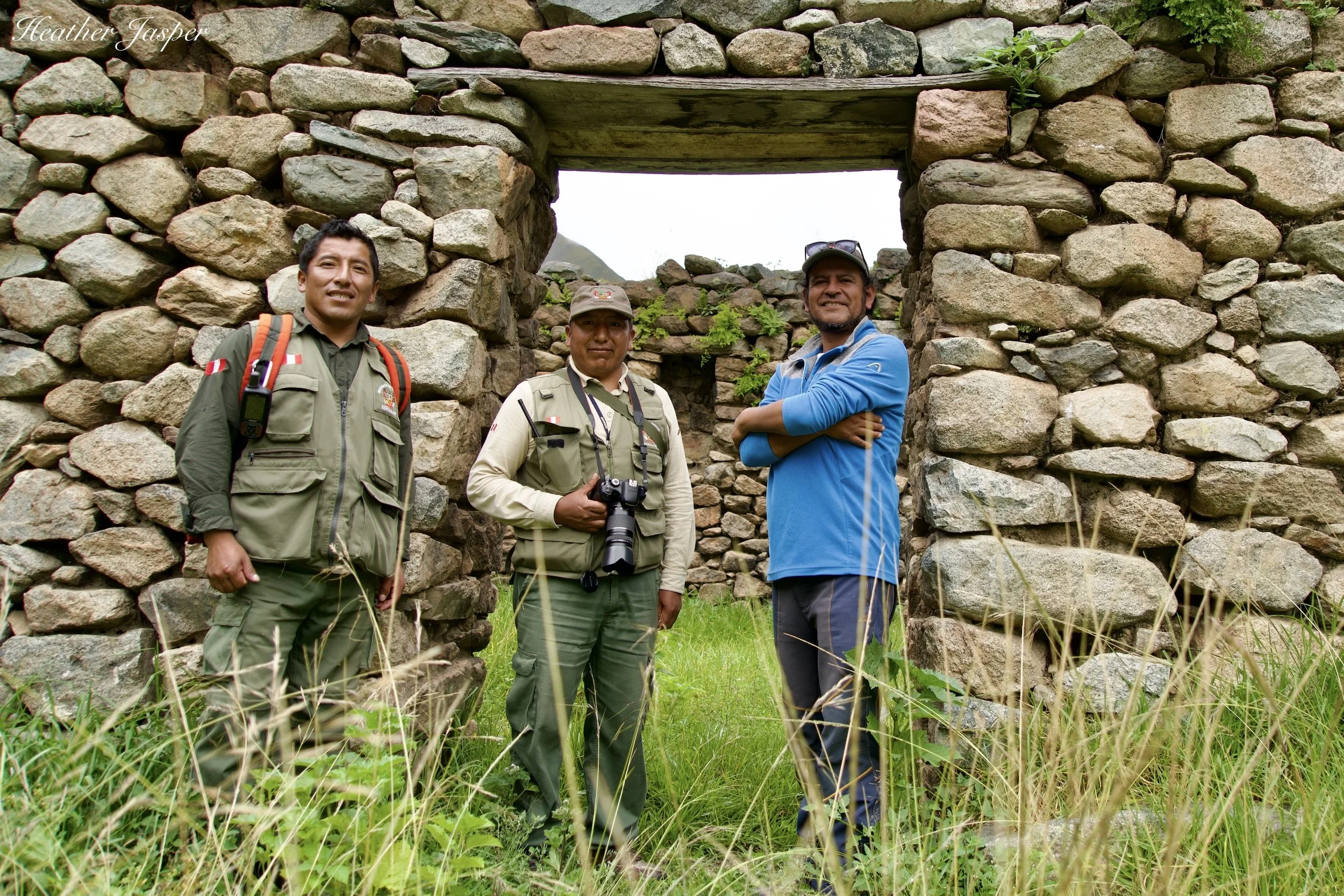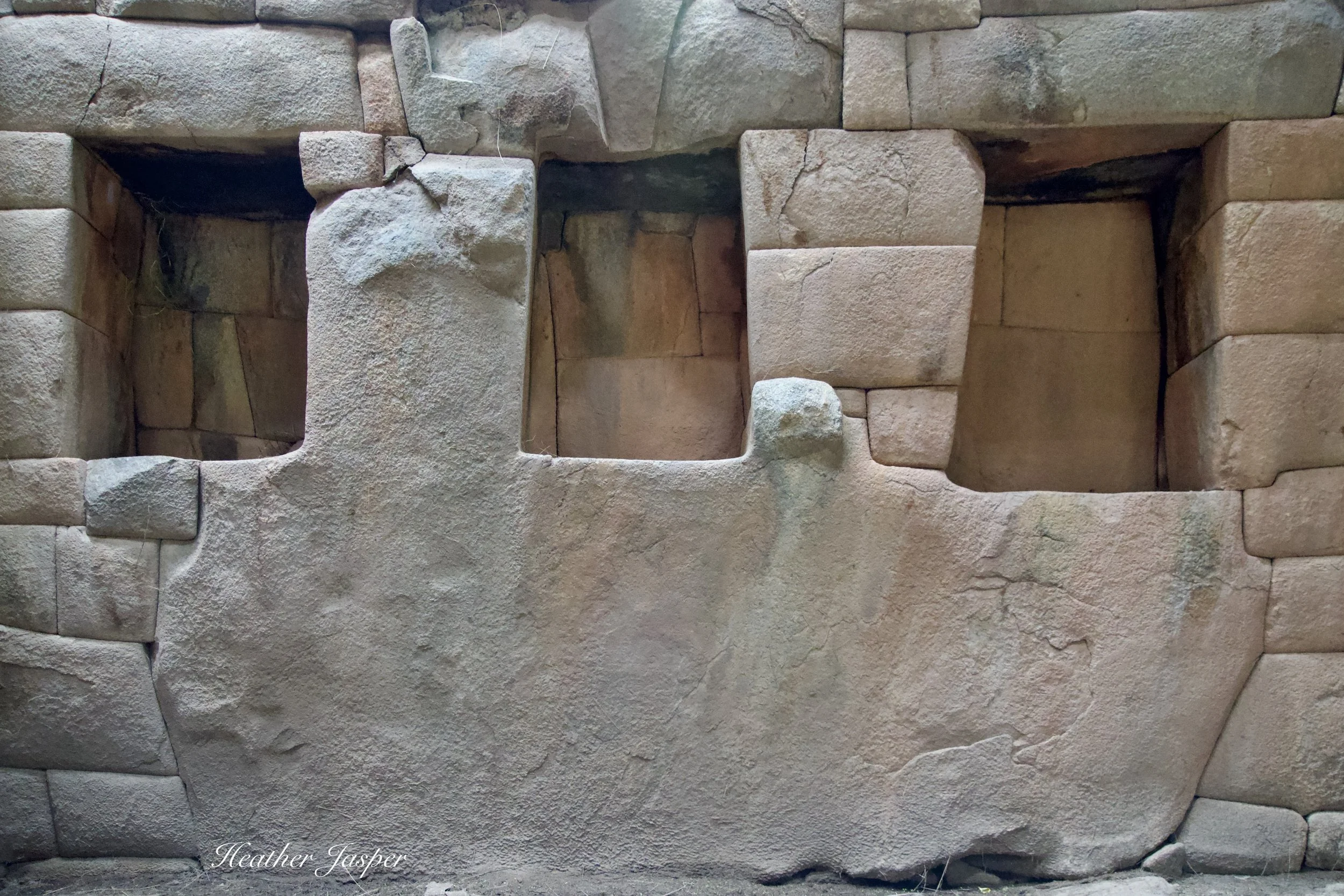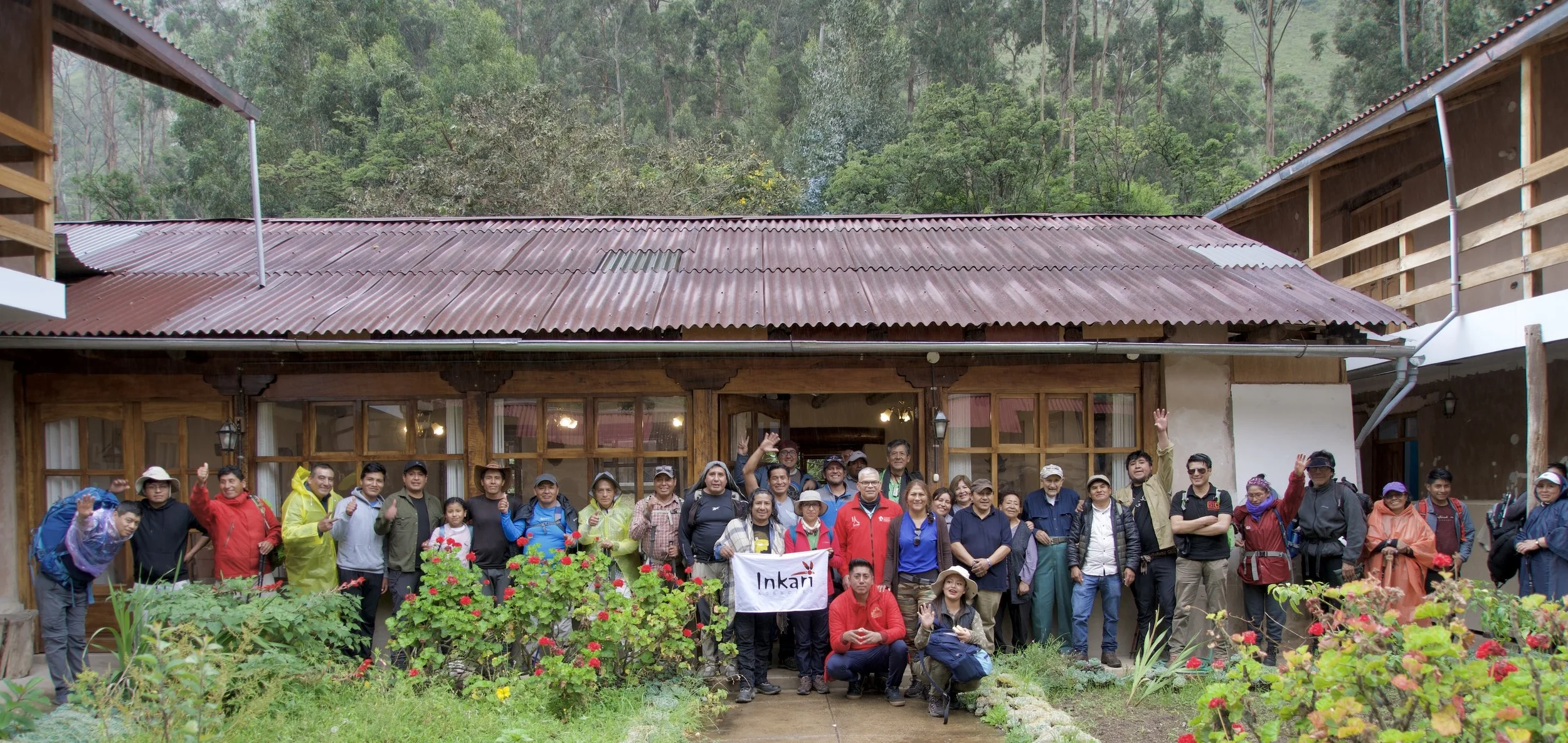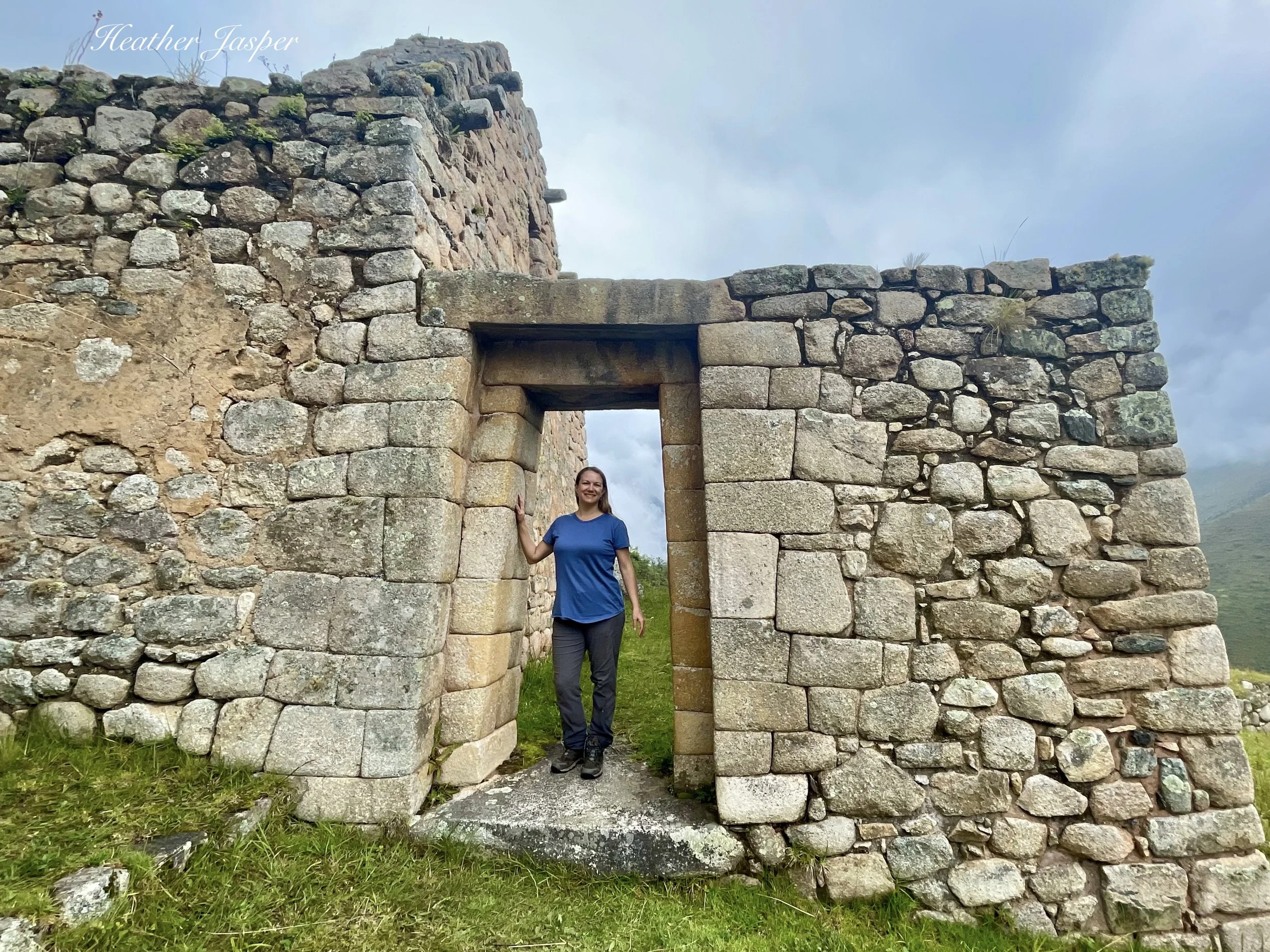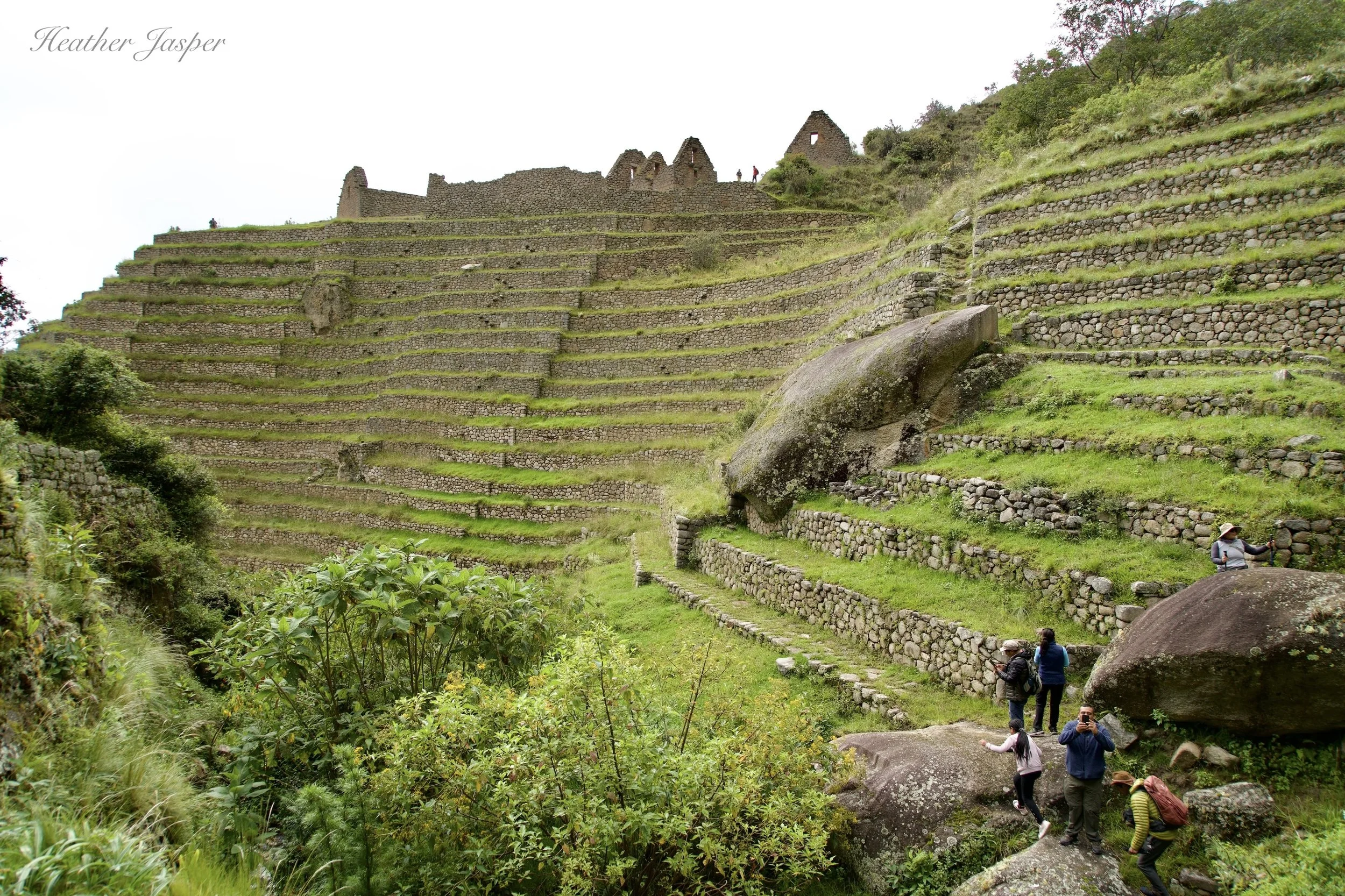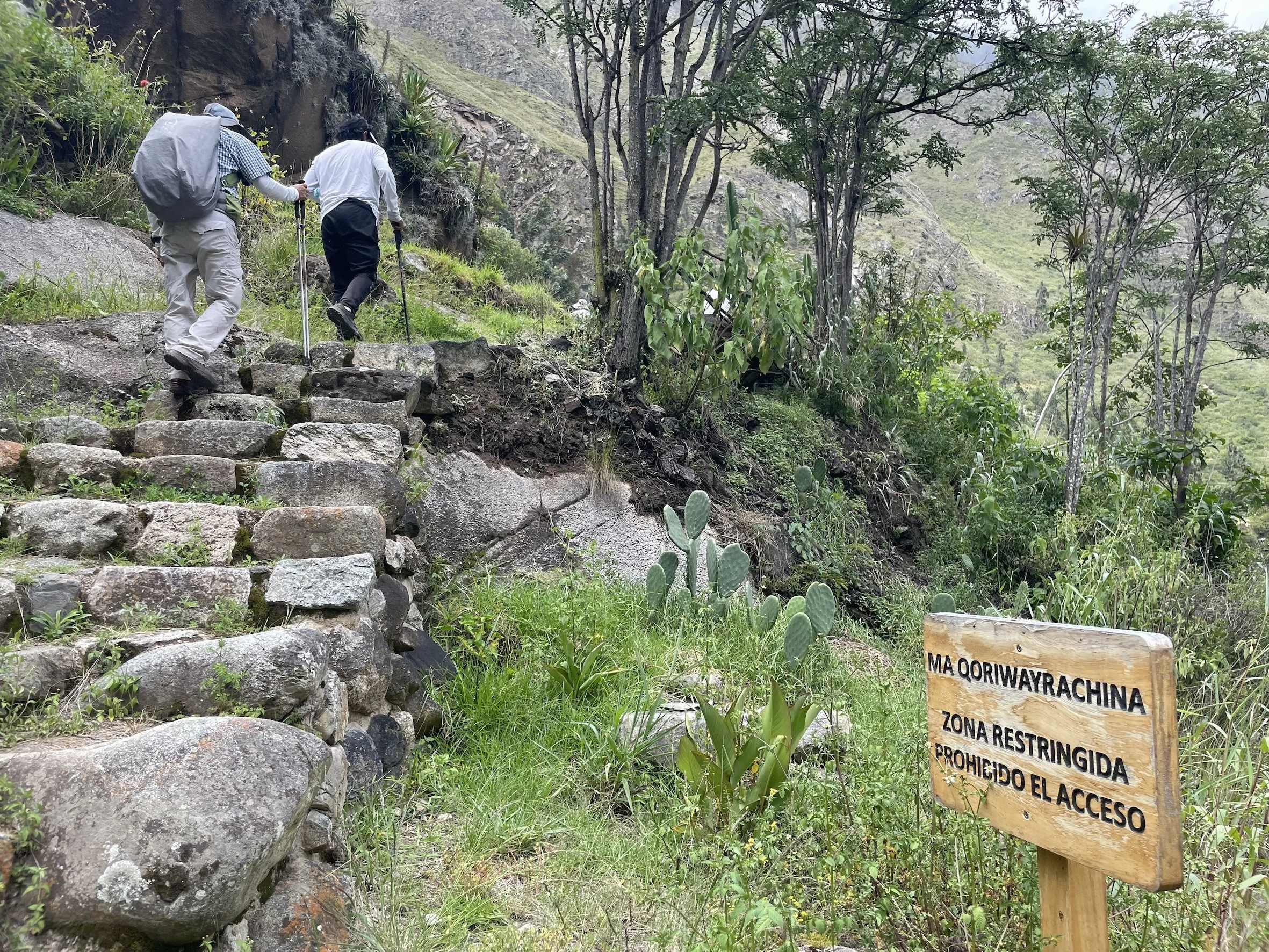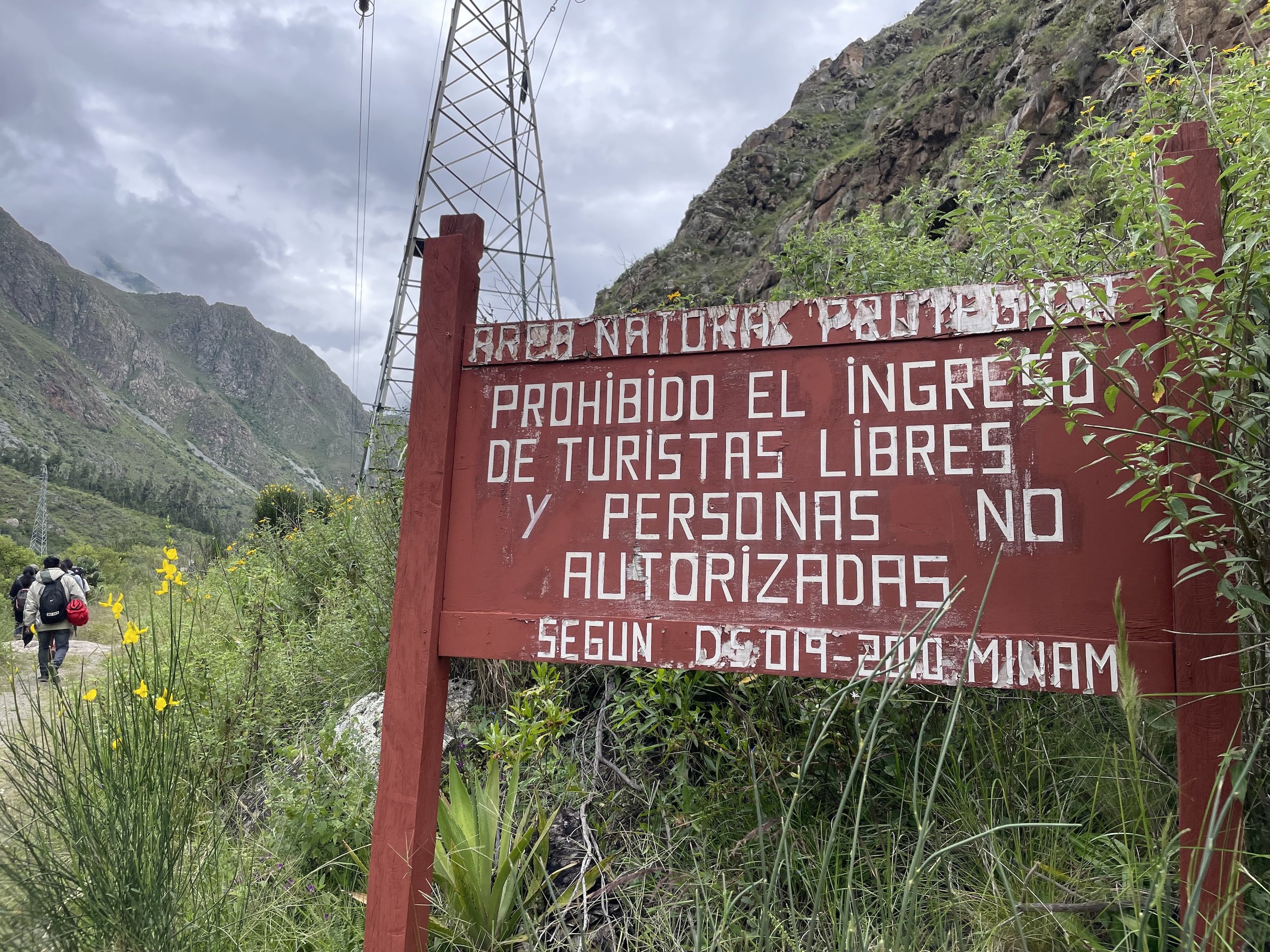Another Inca Trail
This is the only Inca site we visited that’s open to the public. It’s called both Patallaqta and Llaqtapata but the real name is Q’entemarca and it’s at the beginning of the trail marketed as “The Inca Trail.”
Since my first trek to Machu Picchu on the Salkantay trail in 2013, I’ve spent a lot of time hiking in the Cusco region. Still, what I saw last weekend on the Piso de Valle trail blew me away.
We visited nine archeological sites that are not open to tourism.
These stairs on the Piso de Valle trail were carved during Incan times and today are still closed to the public.
Every site was very well preserved or restored. Every one of those sites is of exceptional archeological and historic value. Everything I saw on the hike February 24-25, 2024 should be open to the public.
Piso de Valle means Valley Floor and it describes the trail quite well. We followed the river for most of the two days, hiking up away from the river to see some of the archeological sites, but none were very far from the river.
This trail used to be open to tourists but was closed after a landslide damaged a section in 2010. Since then, a lot of work has been done by the Peruvian government agency SERNANP (Servicio Nacional de Áreas Naturales Protegidas). However, the trail remains closed with no fixed plans to reopen it.
Access prohibited
I lost count of how many signs we passed that said access prohibited. This is an area that is well maintained and safe, with extraordinary Inca ruins. It should be open to tourism.
Salapunku Inca Ruins
Like Sacsayhuaman, near Cusco, the walls at Salapunku are built with massive rocks in a zig zag.
Inkari Cultural Center
Our hike was made possible by Inkari Cultural Center & La Frente de Defensa who worked for months to get permits for us to enter in this restricted zone.
Reopening the Piso de Valle trail
The Indigenous communities that live within the Machu Picchu Historic Sanctuary have been petitioning SERNANP to reopen the Piso de Valle trail. I was told that an area near the 2010 landslide is still unsafe during heavy rains, but that in the dry season it’s fine. (Most tourists come to Peru during the dry season, between May and September). I am joining the residents of the Historic Sanctuary in asking SERNANP to reopen that trail.
In November 2022, eighteen groups that live inside the Historic Sanctuary joined together to create an organization that they named La Frente de Defensa de los Intereses de las Comunidades, Sectores y Asociaciones del Distrito de Machupicchu. (Many people in the Cusco region spell Machu Picchu as one word). Their president, Elizabeth Baca Alejandro, joined us on the hike and I was fortunate to get to talk to her. More on her in future articles!
Ñustahispana Inca Archeological Site
This was one of my favorite sites for its simplicity and obvious perfection as a stage.
Archeologist Óscar Montúfar Latorre
Montúfar Latorre (right) explained what’s known so far about every place we visited, joined by other archeologists and SERNANP employees at some sites.
This is the 48-angle stone at Torontoy, an important Inca site, which was almost destroyed when the train tracks were built. Only the protests of the Indigenous communities made the engineers move the tracks to another spot.
Living inside the Historic Sanctuary
When the Historic Sanctuary was created in 1981, the area’s residents found there were lots of new rules for their ancestral lands. Every ten years, when SERNANP makes a new master plan for the sanctuary, those rules change and often get more complicated. (Many national parks in the US were also inhabited at the time of creation, and the Indigenous residents were forced off their lands. Listen to the Field Trip podcast by the Washington Post to learn more.)
The main purpose of our hike was to show that the Piso de Valle trail is functional and should be reopened. Elizabeth told me that La Frente de Defensa worked for over a year to get permits for our hike. More than anybody else, they want to open the trail to the general public.
I was very impressed with every community that hosted us for a meal and with our lodging. They’re ready for tourists.
Food and lodging on the trail
If the Piso de Valle trail were reopened, the communities that live along the route would be able to sell food and lodging to tourists. Inkari Cultural Center and La Frente de Defensa worked with those communities to plan for our hike. The Piscacucho community cooked breakfast for us on Saturday and we had lunch at Qoriwayrachina. Both were excellent and it was the first time a group like ours has ever had lunch there.
We spent the night near Machu Q’ente, in a lodge built ten years ago by José Enrique Zavaleta. Since the area is closed to tourism, he has only been able to host his friends and family in those past ten years. He prepared us an excellent dinner and breakfast the next morning. As you can see in the photo, we had a very big group. I shared a room with five other women, all of us in bunkbeds. It’s a lodge I would highly recommend to anybody who can figure out how to get there.
We had lunch the next day with a family in a community named Chamana, which was also delicious. Every place we saw and every person we talked to is ready for tourism to be allowed. Like Choquequirao, there are places to eat and places to stay. You need a guide for the history and archeology, but you don’t need to bring tents or food.
There are an estimated 400km (250miles) of trails within the Machu Picchu Historic Sanctuary. Only 39km of that is currently open to the public. Those 39km are marketed as “The Inka Trail,” as if there were only one. There are actually thousands of trails built during Incan times and many that were pre-Inca, which were used and maintained through the 1500s. They stretch from Ecuador throughout Peru and Bolivia, then south to Argentina and much of Chile. Some are still used today.
Huayna Q’ente Door
The stonework around this door was designed to be exposed and the rest of the wall was covered with yellow clay, which still shows a bit on the left. The recessed double doorway shows that it was a very important and sacred place.
Huayna Q’ente
This is only a small part of the Inca ruins that are still closed to tourism - and that should be open.
Piso de Valle is a better trail in many ways
Due to trail conditions, and the lack of communities, tourists hiking “The Inca Trail” are required to hire porters to carry tents, food, and other equipment. There are so many issues with workers’ rights for the porters that I can’t recommend that trail until major changes are made. The Piso de Valle trail not only wouldn’t require porters, it would allow the communities who live inside the Historic Sanctuary to make a living without having to leave their lands.
Another advantage to the Piso de Valle trail is that it doesn’t go up to such high altitude as “The Inca Trail.” Since it follows the river, it’s roughly the same altitude as Ollantaytambo at 2,792m (9,160ft) and Machu Picchu at 2,430m (7,972ft). For comparison, “The Inca Trail” has three high passes around 4,000m (13,000ft).

